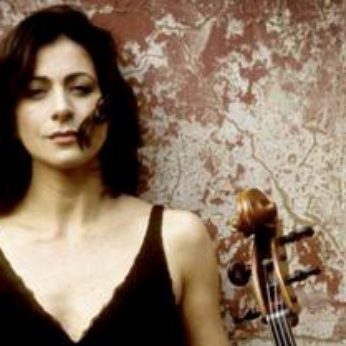Composer: Claude Debussy (b. 1862 - d. 1918)
Performance date: 02/07/2012
Venue: St. Brendan’s Church
Composition Year: 1915
Duration: 00:10:59
Recording Engineer: Anton Timoney, RTÉ lyric fm
Instrumentation: vc, pf
Instrumentation Category:Duo
Artists:
Thomas Larcher -
[piano]
Natalie Clein -
[cello]

The
outbreak of the Great War had a numbing effect on Debussy, who wrote nothing
for nine months. However the three months from mid-July 1915 were probably the
most productive of his entire life. He completed the two-piano pieces En blanc et noir and composed the two
Books of Études at the same time as the Cello Sonata, finishing up with the
glorious Sonata for flute, harp and viola. The two Sonatas were part of a grand
plan to compose a set of six sonatas for different instruments of which he only
completed the first three, the next being the Violin Sonata. The others in the
project were for oboe, horn and harpsichord; trumpet, clarinet, bassoon and
piano; and finally for an ensemble of all the instruments used in the previous
five sonatas together with the gracious
assistance of a double-bass. Tom Adès composed a work for the same
instruments as the first of these unfinished sonatas as a homage to Debussy,
which we featured in the 2000 Festival.
Some
idea of the hostility that Debussy encountered can be gleaned from this note
that Saint-Saëns sent to Fauré: I suggest
you look at the pieces for 2 pianos called Noir et Blanc which M.Debussy has
just published. It’s unbelievable and we must at all costs bar the door of the
Institut against a man capable of such atrocities; they’re fit to stand beside
Cubist paintings. The Cello Sonata probably upset the venerable composer,
born in the lifetime of Cherubini, every bit as much. The sonata is famous for
its employment of timbre as a structural agent, in particular its use of pizzicato. In the first movement the
cello plays arco throughout, in the
second movement nearly half the bars include pizzicato and in the finale about a quarter. This vision of the
cello as a giant bass guitar moves it decisively away from its
nineteenth-century legato inheritance.
The
opening bars make it clear that the piano, Debussy’s instrument, is not going
to go along with the idea of just being an accompanist. This Prologue is mostly
concerned with the main theme, which the cello explores in some detail though
without any sense of linear development. There is a brief central section with
an increase in tempo before the two instruments return to their languid
explorations. Despite the discussion above, the cellist gets plenty of
opportunity to display his expressive talents. The Serenade hails from the
guitar at the window tradition but the effects are witty rather than romantic
and any attempt at romance is immediately and mercilessly mocked. Debussy
originally dubbed the work Pierrot angry
at the moon and this movement clearly fits that title. The Finale enters
without a break with the first real theme in the so-called sonata but it
quickly runs into the sort of problems that would have upset Saint-Saëns but
will hardly worry a modern audience. In all it is a cheekily challenging work
full of delightful incidents and some deliciously understated music.
Copyright © 2024 West Cork Music. All rights reserved.
Designed and developed by Matrix Internet